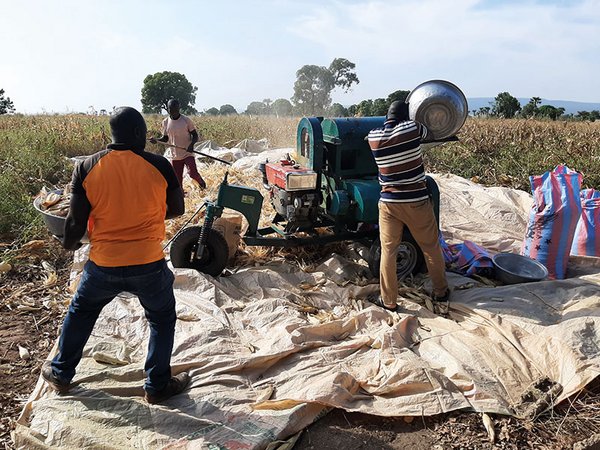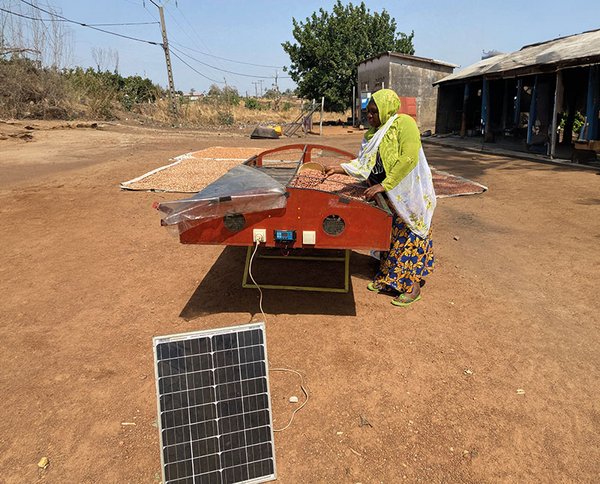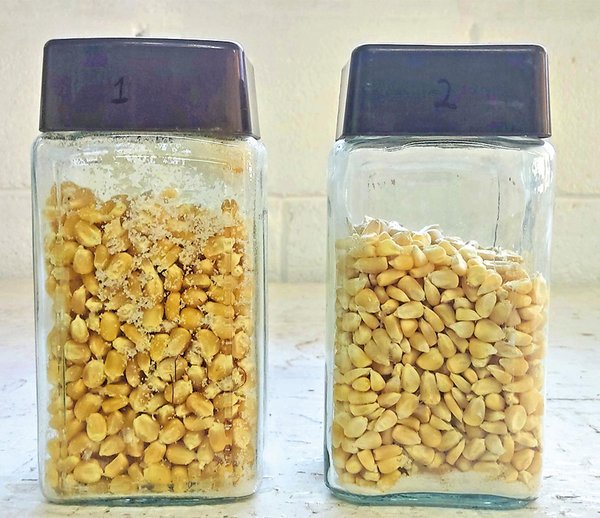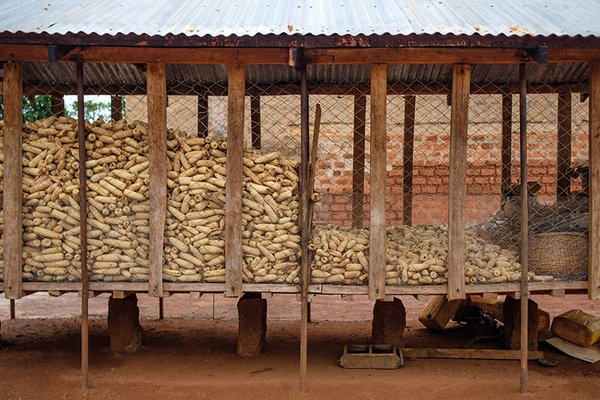Why we need to go beyond technology
Food loss remains an important challenge nowadays and contributes to food insecurity, resource depletion (water, soil and biodiversity), greenhouse gas emissions, health risks and lost income, particularly in low- and middle-income countries. It is a systemic and multifactor issue, and addressing it is a powerful measure in tackling today’s local and global food system problems. Minimising food loss is part of the international development agenda and is recognised as one of the Sustainable Development Goals (SDG 12.3) with the objective of achieving a 50 per cent reduction of global food loss and waste by 2030. Applying post-harvest technologies with supporting public policies is generally suggested to halve food losses, as in the EAT-Lancet Food in the Anthropocene report. So far, sustainable and structural reductions in food loss and waste have been meagre. It important to implement a systemic approach attending the following points.
Assessing loss points, making well adapted technologies available
An in-depth assessment of critical loss points often lacks and post-harvest interventions for cereals such as maize, wheat, and rice, which feed humanity and underpin civilisation, generally focus on storage interventions. However, significant post-harvest losses could occur upfront in the post-harvest system, for example, during harvesting, drying and threshing or at processing stage, and depending on the context, it might be more efficient to address those loss points. Technologies which are well adapted to the local context are a prerequisite for successful implementation.
Many challenges arise when making technologies like small-scale combine harvesters, shellers and dryers accessible to farmers. Often, these devices must be imported, without a local supply of spare parts or the capacity for maintenance, not to mention training for farmers in their optimal use. In many cases, the equipment does not fit the local context, sometimes offering a working throughput far beyond what farmers actually need or can manage. Finally, some post-harvest management innovations require supporting equipment that is locally unavailable. Local sourcing and maintenance of material is critical for the longevity of the investments and for up-scaling. It also creates business opportunities for local input and service providers.

Photo: Albert Barro /CNRST, Burkina Faso
The multifunctional thresher promoted by the Green Innovation Center Burkina Faso responded to the need to reduce grain losses during threshing and the lack of labour during peak post-harvest periods, which was causing delays in threshing that exacerbated grain spoilage. The thresher (see photo) can be used for various crops (maize, sorghum, millet, soybean) and is portable. It has been made available to farmers through a service provider approach, in which young people from rural areas are trained to offer threshing and other agricultural and post-harvest services for in-kind or cash remuneration. Challenges associated with the sustainability and scaling of this approach include the high acquisition costs for the equipment and lack of financing. The local provision of financial instruments to facilitate access to credit, but also anchoring this approach to local governments and NGOs, are among potential solutions.
Defining sustainable business models for post-harvest innovations
The economic effectiveness of post-harvest investments is crucial for long-lasting and well-targeted reduction measures. This calls for sustainable business models which consider key quantitative economic parameters, such as investment costs, running costs, opportunity costs, price impact, marketable quantity and eventually knowledge about the degree of loss reduction and critical loss points within the value chain. Only if value chain actors understand the potential of value creation will they engage in targeted investments in the long run.
Users’ purchasing power needs to figure prominently in planning to scale post-harvest interventions for smallholders in low- and middle-income countries. Smallholders in these countries generally lack resources for the acquisition of the technologies. Microfinance institutions can provide crucial financial services, but their reach is limited by factors such as high transaction costs and farmers’ lack of collateral or financial literacy. Particularly in this case, post-harvest technologies and the need to minimise losses generally fall outside the perceived purview of local financers.
A sustainable business model for post-harvest innovations should offer a roadmap for generating revenue, accounting for operational challenges, social and environmental impacts, and the diverse actors involved and how the innovation can create value for them in the short and long terms. In the pilot phase, this would include involving key stakeholders and creating an enabling environment that facilitates collaboration and partnership. Pay-per-use solar-powered cold storage for the preservation of fruits and vegetables (also see article "Bridging the cooling gap through digitalisation") are examples of sustainable business models. Machine hire centres and post-harvest service providers have also proven effective approaches, but any business model must be locally designed and validated, and in any case will be subject to fluctuating local and global markets.
Women who process peanuts generally air-dry the produce, a long and tedious process that requires labour and constant monitoring to avoid soaking by rains or contamination by pets. The solar-powered small-scale dryer promoted by the Green Innovation Center Togo through women’s cooperatives (see photo) addresses these issues and dries the peanuts four times faster than air drying, avoiding aflatoxin contamination and achieving a high-quality product.
However, use of the dryer does not result in a visually identifiable (i.e. market valued) difference in the processed peanuts, and high profitability is yet to be achieved, even though the dryer reduces labour costs. The sustainability plan for the dryers includes diversifying their use (e.g. for drying medicinal plants) and offering drying services for other cooperatives and private companies.
Photo: Laré B. Penn/ University of Lomé, Togo
Understanding market dynamics
Markets play a crucial role in mitigating post-harvest losses, and understanding market dynamics associated with a post-harvest technology – including fluctuating prices, linkages between the actors in the supply chains of products and consumer preferences – is critical for adoption and scaling. Poorly integrated markets, particularly fragmented value chains with weak linkages among farmers, intermediaries, wholesalers and retailers, limit the volume and quality of produce, while diminishing profits and timely delivery to consumers. Coordination between the value chain actors and enhanced market information can help bring farmers on board and foster delivery of high-quality produce. Improved post-harvest technologies can address these challenges but need to be profitable and incentivise investments associated with equipment and practices. Linking smallholder farmers to market niches – for example, connecting Mexican producers of blue maize with gourmet restaurants in large cities and ensuring the grain quality through hermetically sealed storage, or market diversification and premium prices for products such as aflatoxin-free maize also stored in sealed containers – are relatively simple strategies to encourage investment in post-harvest technologies.
Technological solutions are a key component of post-harvest management, but their success hinges on a host of factors that influence their adoption, effectiveness and sustainability. They may significantly reduce losses and be cost-effective, but potential stakeholders need to be made fully aware of the benefits and, as much as possible, their precise amount, and thus be willing to invest in, promote and help scale the technology. Overall, minimising post-harvest losses requires a systemic (value chain) approach involving all relevant stakeholders in the design, implementation and evaluation of any intervention.
Hermetic technologies
Hermetic technologies, such as hermetic bags and hermetic metal silos, are airtight grain storage containers. Any pests (insects, fungi) infesting the stored grain rapidly deplete the oxygen in the container and die. The effectiveness of such sealed containers also depends significantly on the moisture content of the grain, which needs to be below 14 per cent at the time it is stored. This can be challenging in smallholder conditions, particularly in areas with high relative humidity and for farmers lacking a device to measure grain moisture. Small-scale dryers and moisture meters (like the DryCard™, which includes an indicator strip that, when enclosed in a jar with a grain sample, changes colour when the grain is not sufficiently dry), as well as good open-air drying practices and alternative ways of checking grain moisture content, need to be promoted, along with sealed containers. The salt method, based on the hygrospic properties of salt (see photo), is one easy way to check moisture content.
Using the salt method to check maize grain moisture content; it consists of adding 2-3 spoons of dried salt to a jar filled three quarters with a grain sample and shaking it for 2 minutes; if the grain sample is not sufficiently dried (as on the left), the salt will stick to the wall of the jar; otherwise (as on the right), the grain is sufficiently dry and can be safely stored in hermetic technologies. Photo: Jessica González/ CIMMYT, Mexico
Sylvanus Odjo is a post-harvest specialist at the International Maize and Wheat Improvement Center (CIMMYT) based in Texcoco, Mexico, who works on the development and scaling of post-harvest technologies and practices in Africa and Latin America. Sylvanus holds a PhD in agronomic science and biological engineering from the University of Liège, Belgium.
Heike Ostermann is a post-harvest expert at Deutsche Gesellschaft für Internationale Zusammenarbeit (GIZ) and is based in Bonn, Germany. She has long working experience in rural development projects in Africa, and is currently project manager at the Green Innovations Centers for the Agri-Food Sector. Heike holds a PhD in agriculture/ crop production.
Contact: sylvanus.odjo@cgiar.org
References
Willett, W. et al. Food in the Anthropocene: the EAT–Lancet Commission on healthy diets from sustainable food systems. Lancet 393, 447–492 (2019).
Stathers, T. et al. A scoping review of interventions for crop postharvest loss reduction in sub-Saharan Africa and South Asia. Nat. Sustain. 3, 821–835 (2020).
GIZ. Economic Sustainability of Post-Harvest-Investments – Analyses from the Green Innovation Centers, GIZ (2023).





Add a comment
Be the First to Comment